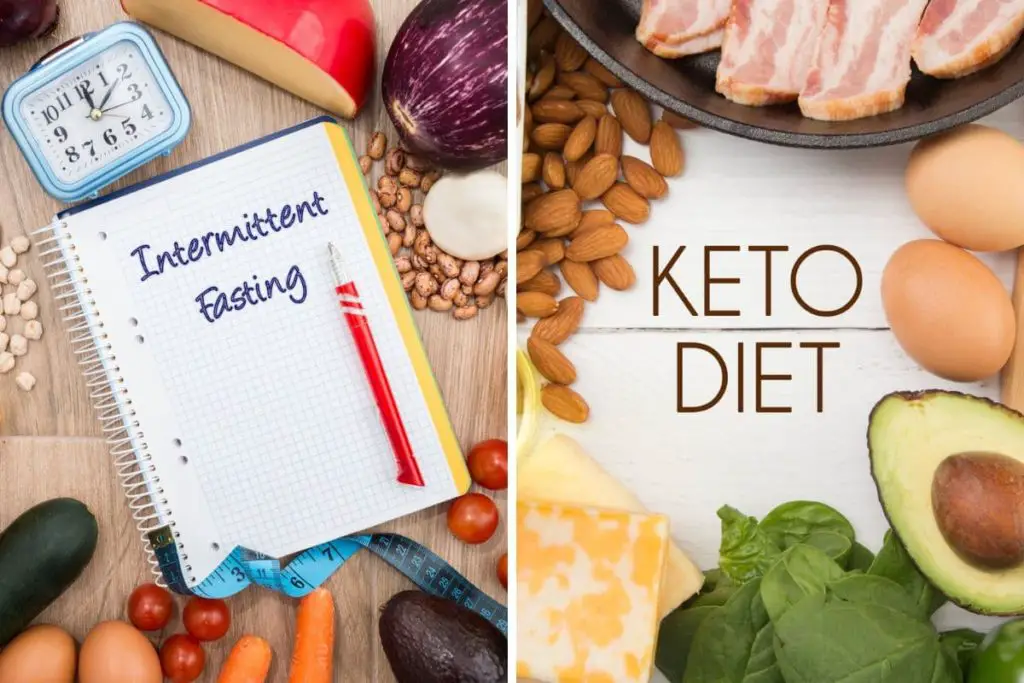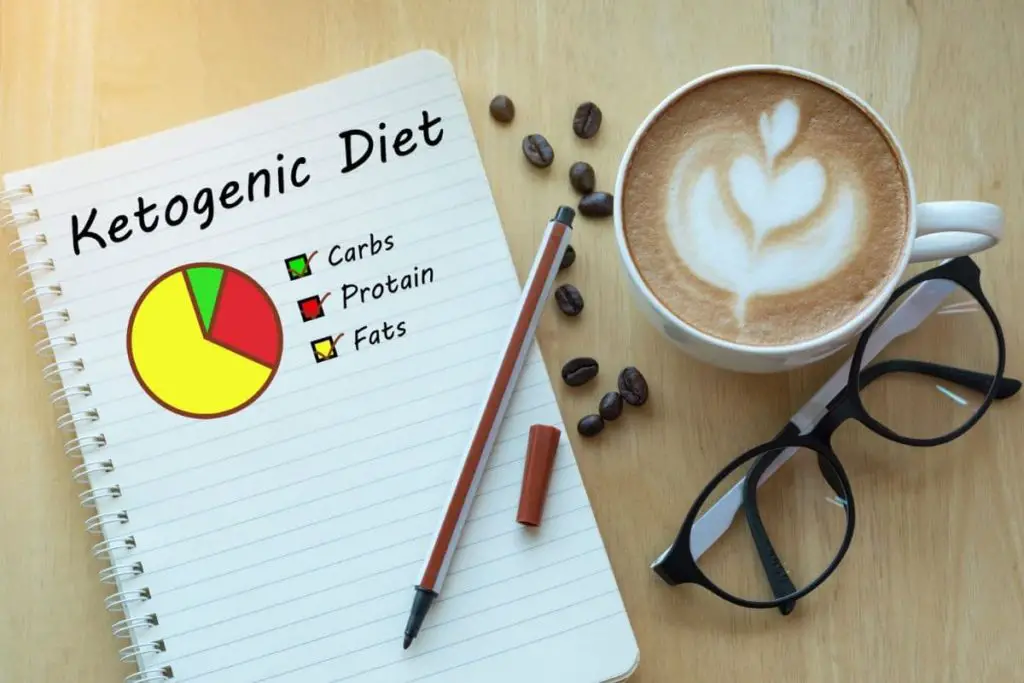Intermittent fasting has become popular for people who wish to maintain or lose weight. One of the most commonly practiced forms of it is in conjunction with a keto diet. However, intermittent fasting is relatively new, many people struggle with mixing it with a keto diet.
You can intermittently fast for 16 hours each day on the keto diet. For increased weight-loss benefits, you should increase the time you fast. However, you can also alter your schedule by alternating fasting days, to increase or decrease the intensity of your fast.
In this article, I’ll explore everything you need to know about how regularly you should intermittently fast on the keto diet so that it works with your lifestyle and you healthily balance your nutrient consumption.

Why You Should Fast Frequently On a Keto Diet
The keto diet is far more than just a passing fad. It relies on fat burning to boost weight lost. In essence, you train your body to rely on fat burning rather than carbs for energy, leading you to burn more fat than you normally would.
As good as the ketogenic diet is, it’s even more effective when combined with intermittent fasting. Combining both can give you a significant metabolic boost making your weight loss journey a lot easier.
It’s generally safe to intermittent fast on the keto diet. There are various intermittent fasting schedules you can follow. For example, some people follow the 16:8 fasting rule, while others choose to fast on alternate days. Many options are available for you to find the most effective one.
If you’re new to fasting, starting with something that feels easy to accomplish is better. This will depend on your specific body and lifestyle. For example, skipping a meal might be achievable for one person, but it might make another person feel too hungry, causing them to battle to complete their daily chores.
If you’re starting a fasting regimen, pay attention to how your body feels when you restrict food during hours of no eating to adjust the plan, so it feels more comfortable. It’s also important to remember that completing an intermittent fasting schedule can be challenging if you’re new to fasting or you’ve just started a keto diet.
In this case, starting one before the other is a good idea so you don’t feel overwhelmed. Suppose you’re interested in the keto diet. In this case, it’s recommended that you follow it for a few weeks before going on an intermittent fast, as this gives your body a chance to transition smoothly into fasting.
If you’re interested in intermittent fasting on the keto diet, it’s good to first explore what you need to know about their respective benefits. Both intermittent fasting and the keto diet offer various health benefits. Let’s take a look at them a bit closer.
Benefits of Intermittent Fasting
Intermittent fasting is when you restrict your calories for a few hours at a time or longer. According to John Hopkins Medicine, when your body has burned enough calories, it starts purely burning fat. Intermittent fasting has other benefits, such as lower blood pressure and lowers insulin levels.

A study found that when men with prediabetes went on an intermittent fasting schedule that involved an 8-hour eating window, they had dramatically lower insulin levels, significantly lower blood pressure, and improved insulin sensitivity, as Cell Metabolism reports.
Benefits of the Keto Diet
The keto diet is about prioritizing healthy fats and proteins in your diet while limiting carb intake. This serves to deplete your body sugar to break down fat for energy. A standard keto diet will have the following calorie breakdown:
- 70-80 percent of calories should be from fat.
- 15-30 percent of calories should be from protein.
- 0-10 percent of calories should be from carbohydrates.
So, if you follow a 2000-calorie diet every day, this would be the equivalent of consuming approximately 40 g (1.41 oz) of carbs, 75 g (2.65 oz) of protein, and 165 g (5.82 oz) of fat. The keto diet has become popular because it offers so many health benefits. Here are some noteworthy ones:
- Keto promotes weight loss. Since you eat many foods on the keto diet that increase satiety, this has been linked to reducing hunger-stimulating hormones, as Obesity Reviews reports.
- Keto reduces your cholesterol level. Research has found that the keto diet causes a decrease in total cholesterol levels, low-density lipoprotein (LDL), and triglycerides, while increasing high-density lipoprotein (HDL), which is the “good” cholesterol, as Nutrients reports.
- Keto strengthens the brain. Ketones (fatty acids released by the liver and used as fuel to boost metabolism) are produced during the keto diet, which an Alzheimer’s study found helps to strengthen the brain and nerve cells, as the International Journal of Molecular Sciences reports.
Benefits of Combining Intermittent Fasting With Keto
Intermittent fasting while on the keto diet can help you to reach ketosis faster, which is when your body uses fat as fuel. Both intermittent fasting and keto are focused on burning body fat for energy instead of carbs.
This is why these eating plans complement each other nicely. And, since keto involves following a high-fat diet, this also provides the fuel you need to prevent unpleasant symptoms during intermittent fasting, such as extreme hunger and tiredness.
Types Of Intermittent Fasting for Keto Diets
There’s no strict way to approach intermittent fasting. You can try various types of intermittent fasting plans on the keto diet to find the best one for you. Here’s a rundown of six popular programs and what benefits they offer. Some are more beginner-friendly than others.

16:8 Diet
This intermittent fasting program involves fasting for 16 hours in the day and eating for the remaining eight hours. You might have to tweak your current eating schedule to achieve this but this usually is the optimal fasting range.
This intermittent fasting plan not only restricts the calories you consume in 24 hours but improves your blood pressure. Following an eight-hour eating plan has been found to reduce blood pressure in adults with obesity, as Nutrition and Healthy Aging reports.
Reducing your calorie intake in the evenings is also beneficial because it decreases inflammation. It’s been found to lower your risk of inflammatory conditions, such as breast cancer, as Plos One reports.
14:10 Diet
This is another beginner-friendly type of intermittent fast. It involves eating for 14 hours in the day, then not eating anything for the remaining 10 hours. Increasing the number of hours during which you don’t eat puts your body into a state of gluconeogenesis.
After fasting for eight hours, the liver uses up its glucose. Since you’re not consuming carbs on keto, the body will produce glucose with its fat reserves, as The American Journal of Clinical Nutrition reports. Therefore, gluconeogenesis boosts the number of calories and fat you can burn.
20:4 Diet
This is also known as the OMAD – One Meal a Day – fast. You fast for 20 hours of the day and then you eat for the remaining four hours. This isn’t easy to achieve if you’re fasting for the first time, so it’s best tried if you want to progress from the 16:8 fasting schedule. You can do this intermittent fast daily, weekly, or even monthly.
5:2 Diet
The 5:2 diet involves eating how you typically would for five days of the week and then eating fewer than 500 calories on the remaining two days. This is a common diet for people who want to lose weight. Reducing your calorie intake can help you to burn pounds faster.
If you consider that you need to burn 3,500 calories to lose one pound of fat, then following this eating plan twice a week will burn 1,000 calories, helping you to reach your weight-loss goal faster.
Alternate-Day Fasting
This involves eating normally for one day and then fasting for the entirety of the next day. Alternate-day fasting is a popular diet if you’re trying to jumpstart your weight loss. However, it can be too restrictive for some people to follow.
Occasional 24-hour fasting does have benefits, though. It helps you to lose weight by restricting your calorie intake and has also been found to boost your cardiovascular health. Consuming only water for 24 hours encourages decreased plasma levels of TMAO (Trimethylamine N-oxide), a compound that is a risk factor for coronary artery disease, as Circulation reports.

Eat-Stop-Eat Fasting
This is a useful intermittent fasting program because it helps you work up to a more restrictive fast. You start with a 14-hour fast and then slowly adopt a 24-hour fast once or twice a week. By starting slowly, you can get your body used to restrictive eating without overdoing it.
This type of intermittent fasting also allows you to make the most of fasting’s benefits in different ways. This enables you to see what works for you.
Tips for Starting Intermittent Fasting on the Keto Diet
As mentioned earlier, starting a keto diet and trying intermittent fasting simultaneously is not advisable, as it’s a shock to your body to stop using glucose as fuel. Other essential tips to follow if you want to try intermittent fasting on the keto diet include the following.
- Start small. You should ease into fasting, especially if you’ve never done it before. An intelligent approach is to start by delaying your breakfast time by a few hours. This can help you to get used to not eating for a few hours at a time.
- Only fast on keto for up to a year. You should do intermittent fasting on a keto diet for a maximum of 12 months. Then you should move into a regular low-carb diet. This is because it’s more beneficial for weight loss over long periods of time, as OSF Healthcare reports.
- Eat enough healthy foods. You must ensure you’re consuming enough nutrients to nourish your body and keep you in good health. Snacking on unhealthy, processed foods during your eating window is best avoided.
- Avoid being too restrictive. You don’t want to feel like you’re starving yourself. If your daily consumed calories are too low, this will result in water and muscle loss, as U.S. News reports.
- Drink water throughout your fast. Hydration helps you to keep side effects of the fast at bay, such as headache and lightheadedness. During intermittent fasting, you can consume beverages such as water, tea, coffee, and non-alcoholic drinks.
- Be aware of the adverse side effects. When undertaking an intermittent fast, unpleasant side effects can include prolonged hunger, tiredness and fatigue, difficulty concentrating, overeating during eating windows, irritability, and insomnia.
- Know that it might reduce your athletic performance. You might experience decreased performance when combining fasting with keto if you’re athletic. Intermittent fasting depletes fat stores without destroying muscle mass, but eating a small number of carbs on the keto diet can reduce your athletic performance, as Men’s Health reports. This is because carbs are the best fuel source for athletes.
When You Shouldn’t Intermittent Fast on Keto
You shouldn’t go on an intermittent fast on the keto diet if:
- You are pregnant or breastfeeding.
- You have a history of eating disorders.
- You’re experiencing adverse or unpleasant side effects from the diet that are disrupting your life.
Before embarking on an intermittent fast, you should consult your doctor if you have a health condition such as heart disease or if you’re on chronic medication. For example, if you take medicines that lower your blood sugar, you should only take part in intermittent fasting under the guidance of your doctor.

Final Thoughts
If you’re on the keto diet, you might want to take health benefits, such as weight loss, to a higher level by incorporating intermittent fasting into your eating plan. It’s generally safe to do intermittent fasting as much as you want, but if you’re new to it, you should take it slow without restricting your calories or going for too many hours without food until your body feels used to it.

